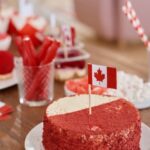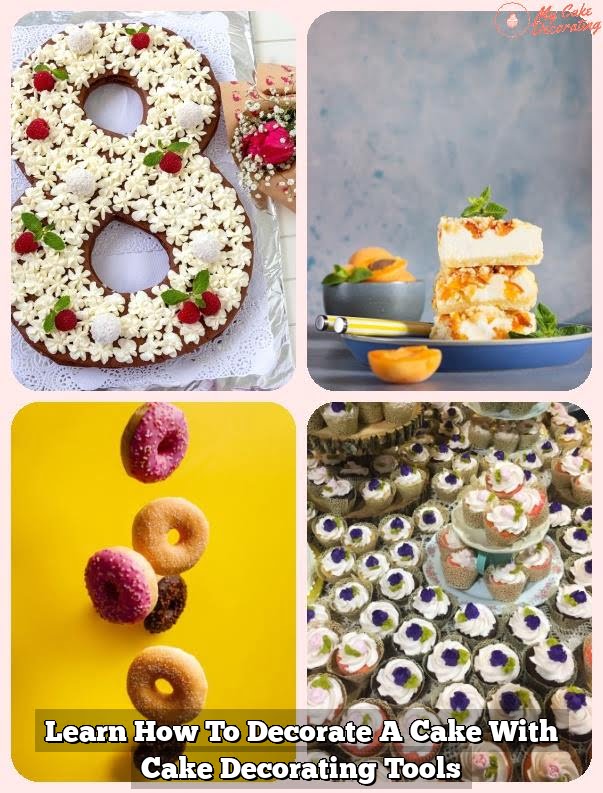Communion cakes play a significant role in religious ceremonies, especially during the sacrament of communion. These cakes are not just desserts but symbolic representations of the spiritual significance of the occasion.
Decorating a communion cake is a beautiful way to honor this sacred ritual and create a memorable centerpiece for the celebration. In this article, we will delve into the art of decorating communion cakes, offering tips and techniques to help you create a stunning and meaningful confection that reflects the solemnity and joy of this important event.
When it comes to decorating a communion cake, there are various factors to consider, from choosing the perfect cake base to selecting the right frosting and icing techniques. The type of cake you choose can set the tone for the entire design, with options ranging from traditional vanilla or chocolate flavors to more elaborate choices like red velvet or lemon. Each flavor brings its own unique texture and taste profile, adding depth to your creation.
As you embark on decorating your communion cake, you’ll have an array of options for frosting and icing techniques at your disposal. Whether you prefer the smooth finish of buttercream, the versatility of fondant, or the crisp lines of royal icing, each method offers a distinct look and feel to your design. By exploring these different options and experimenting with various tools and decorations, you can bring your vision for the perfect communion cake to life.
Choosing the Perfect Cake Base
When it comes to decorating a communion cake, one of the crucial decisions you’ll need to make is selecting the perfect cake base. The type of cake you choose can significantly impact not only the taste but also the overall look of the finished product. Here are some options to consider when choosing a cake base for your communion celebration:
- Vanilla Cake: A classic choice that pairs well with almost any frosting or icing flavor. It’s simple, yet versatile, making it a popular option for communion cakes.
- Chocolate Cake: Rich and decadent, chocolate cake is a favorite among many individuals. Consider using this flavor if the recipient has a preference for chocolate.
- Lemon Cake: If you want to add a touch of freshness to your communion cake, consider opting for a lemon-flavored cake. It’s light and zesty, perfect for spring or summer celebrations.
Each type of cake offers its unique characteristics in terms of flavor and texture. When deciding on the perfect cake base, consider the preferences of the guest of honor as well as any dietary restrictions or allergies that need to be accommodated.
In addition to traditional flavors like vanilla, chocolate, and lemon, you may also want to explore more unique options such as red velvet, carrot cake, or even a multi-layered marble cake. The key is to select a cake base that not only tastes delicious but also complements the theme and décor of the communion event.
By choosing the right foundation for your decorated communion cake, you set yourself up for success in creating a visually stunning and delectable dessert that will be cherished by all who partake in the celebration.
Frosting and Icing Techniques
Frosting and icing play a crucial role in decorating a communion cake. The choice of frosting can determine the appearance, taste, and overall appeal of the cake. There are several options to consider when deciding on the type of frosting or icing to use for decorating the communion cake.
One popular option is buttercream frosting, known for its creamy texture and versatility. Buttercream can be easily tinted with food coloring to create different shades and hues for decorations on the cake.
Another commonly used frosting for communion cakes is fondant. Fondant provides a smooth and elegant finish to the cake, making it ideal for intricate designs and detailed decorations. While fondant may require some practice to work with, it offers a clean canvas for creativity when decorating communion cakes.
Royal icing is another option that is often used to create intricate piped designs on cakes. This type of icing dries hard, making it perfect for delicate details such as lace patterns or intricate borders.
When choosing the right frostings or icings for decorating a communion cake, it’s essential to consider the theme of the event, personal preferences, and skill level. Whether opting for buttercream, fondant, royal icing, or a combination of these techniques, each offers unique possibilities for creating a stunning and memorable communion cake.
| Frosting/Icing Type | Description |
|---|---|
| Buttercream Frosting | Creamy texture, easy to tint with food coloring |
| Fondant | Smooth finish, ideal for intricate designs |
| Royal Icing | Dries hard, perfect for detailed piped designs |
Working With Fondant
Smooth out any air bubbles or wrinkles by gently pressing the fondant against the cake using your hands or a fondant smoother tool. Trim off any excess fondant around the base of the cake using a sharp knife. For intricate designs, consider using silicone molds, embossing tools, or cookie cutters to create patterns or shapes on the fondant.
If you want to add color to your fondant, use gel food coloring sparingly as it can quickly darken the fondant. Knead the coloring into the fondant until you achieve your desired shade, taking care not to overwork it as this could cause streaking. Once you have covered your communion cake with fondant and created your designs, allow it to set before adding any final touches like piping or edible decorations.
| Key Tip | Description |
|---|---|
| Chill your cake | Ensure your cake is chilled before covering it with fondant for better results. |
| Smooth out air bubbles | Use a fondant smoother tool or your hands to press out any air bubbles on the surface of the fondant. |
| Practice makes perfect | Don’t be discouraged if your first attempt doesn’t turn out perfectly – practice and patience are key when working with fondant. |
Piping and Piping Tips
Introduction to Piping and Piping Tips
Piping decorations onto a cake can elevate its overall look and add a touch of elegance. Whether you’re aiming for intricate designs or simple patterns, mastering piping techniques can help you create a stunning communion cake.
Piping involves using different tips and techniques to apply frosting or icing onto the cake in various patterns, shapes, and textures. This section will delve into the process of piping decorations onto a communion cake and provide insights on choosing the right piping tips for your design.
Types of Piping Tips
There are numerous types of piping tips available that can help you achieve different effects on your communion cake. From creating delicate flowers to writing personalized messages, selecting the appropriate piping tip is crucial.
Some common types of piping tips include round tips for outlining and writing, star tips for creating rosettes or borders, leaf tips for crafting foliage, and petal tips for making flower petals. Experimenting with various piping tips can give your communion cake a unique and professional finish.
Piping Techniques
Before starting to pipe decorations onto your communion cake, it’s essential to practice basic piping techniques to gain confidence and precision. One fundamental technique is the consistency of your frosting or icing – it should be smooth but firm enough to hold its shape when piped. Another key aspect is applying consistent pressure while piping to ensure even lines and designs.
Additionally, practicing control over the speed at which you pipe can help in achieving desired patterns without any breaks or smudges. By honing your piping skills and experimenting with different techniques, you can create beautifully decorated communion cakes that are both visually appealing and delicious.
Adding Edible Decorations
One of the most delightful parts of decorating a communion cake is adding edible decorations that not only enhance the visual appeal but also offer a unique touch to the celebration. Edible decorations can range from delicate edible pearls, vibrant edible flowers, to meaningful religious symbols that add a special significance to the occasion.
Whether you are looking to achieve a simple and elegant look or want to go all out with intricate designs, there are plenty of creative ideas to explore when it comes to embellishing your communion cake.
Edible Pearls
One elegant way to decorate a communion cake is by incorporating edible pearls. These tiny spherical candies add a touch of sophistication and can be strategically placed around the cake tiers for a classy finish. Edible pearls come in various sizes and colors, allowing you to customize the cake based on your preferred color scheme or theme. You can create elaborate patterns or keep it simple with a minimalist design by scattering them across the cake surface.
Edible Flowers
Another popular choice for adding beauty and charm to a communion cake is using edible flowers as decorations. Fresh edible flowers like roses, lavender, or pansies can be carefully arranged on the cake to create a stunning natural aesthetic.
If using fresh flowers isn’t an option, you can opt for sugar or gum paste flowers that are equally beautiful and safe for consumption. Edible flowers not only brighten up the cake but also infuse it with subtle flavors that complement the overall taste.
Religious Symbols
For a communion cake that truly embodies the spirit of the religious ceremony, consider incorporating meaningful religious symbols as edible decorations. Crosses, doves, chalices, or wheat sheaves are common symbols associated with communion and can be beautifully crafted out of fondant or marzipan to adorn the cake.
These symbolic decorations not only serve as visual reminders of the solemnity of the occasion but also add an extra layer of reverence and spirituality to the overall aesthetic. Remember to place these religious symbols thoughtfully on the cake while ensuring they stand out amidst other decorative elements while respecting their significance in context.
By exploring different options for adding edible decorations like pearls, flowers, or religious symbols to your communion cake, you can elevate its appearance while staying true to the essence of this special milestone celebration. Whether you choose simplicity with subtle touches or go bold with intricate designs, let your creativity shine through as you personalize the cake for this significant event.
After all, decorating a communion cake is not just about making it visually appealing but also about capturing the essence of faith and joy that accompanies this sacred moment in time.
Personalizing the Cake
When it comes to celebrating a religious ceremony like First Communion, personalizing the cake can add an extra special touch to the festivities. There are various ways to incorporate meaningful details into the design of the communion cake that will make it truly unique and memorable for the recipient.
One popular way to personalize a communion cake is by including the recipient’s name on the cake. This can be done using edible letters made of fondant or royal icing, or by piping the name onto the cake with frosting.
Another way to personalize a communion cake is by featuring the date of the ceremony on the design. Adding the date in a prominent place on the cake can serve as a reminder of this significant milestone in one’s faith journey. This can be done with edible decorations like sugar plaques, fondant cutouts, or even piped frosting. The date can be placed on top of the cake, along the sides, or as part of a larger design element.
In addition to including names and dates, incorporating other meaningful details into the communion cake can further enhance its significance. This could involve adding religious symbols that are important to the recipient or their family, such as crosses, doves, chalices, or Bible verses.
These elements can be crafted out of fondant, piped onto the cake with frosting, or included as part of edible decorations. By personalizing a communion cake in this way, you are not only creating a beautiful dessert but also honoring and celebrating the religious significance of this important occasion.
Transporting and Displaying the Cake
Transporting and displaying a beautifully decorated communion cake is just as important as the decoration process itself. After spending time carefully crafting and personalizing the cake, it’s crucial to ensure that it reaches its destination safely and in perfect condition.
To transport the cake without any mishaps, consider storing it in a sturdy cake box or carrier that provides ample support and protection during travel. Make sure to place the cake on a flat surface in your vehicle to prevent any sudden movements while driving.
When setting up the communion cake for display at the event, choose a prominent location that allows guests to admire the intricate decorations. Consider using a cake stand or pedestal to elevate the cake and create a focal point at the celebration. Be mindful of the surroundings and avoid placing the cake in direct sunlight or near sources of heat, which can cause the frosting to melt or decorations to wilt.
To add an extra special touch to the presentation of the communion cake, consider incorporating elements from the religious theme of the event. This could involve adding symbolic crosses, angels, doves, or other religious symbols made from fondant or edible decorations. Personalizing the cake with the recipient’s name, date of the ceremony, or relevant scripture verses can also make it more meaningful for them and their guests.
In conclusion, decorating a communion cake is not solely about creating visually appealing designs but also about ensuring that it is safely transported and elegantly displayed at the event. By following these tips on how to decorate a communion cake efficiently and creatively, you can make sure that this important centerpiece contributes to a memorable and joyous celebration of religious significance.
Frequently Asked Questions
How Do You Ice a Communion Cake?
To ice a Communion cake, start by preparing a smooth layer of frosting on the cake using a spatula. You can then add decorations like edible flowers, sprinkles, or even store-bought Communion-themed decorations to enhance the appearance of the cake.
What Can I Top a Cake With Besides Frosting?
Aside from frosting, there are various creative ways to top a cake. Fresh fruits such as berries or citrus slices can add a pop of color and freshness. Nuts, seeds, shredded coconut, or chocolate shavings can also be used for texture and flavor.
How Can I Decorate Without a Piping Bag?
Decorating without a piping bag is possible by using everyday utensils like spoons, forks, toothpicks, or knives to create designs on the cake’s surface. Additionally, cookie cutters can be used to shape fondant or other toppings for unique decorations.

Welcome to my blog about home and family. This blog is a place where I will share my thoughts, ideas, and experiences related to these important topics. I am a stay-at-home mom with two young children. I hope you enjoy reading it! and may find some helpful tips and ideas that will make your home and family life even better!





